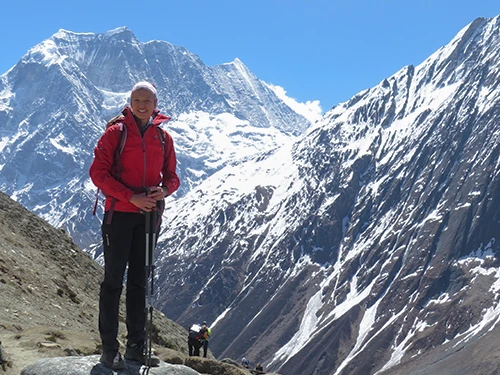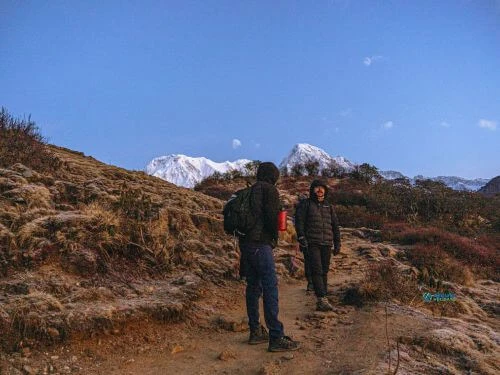The Annapurna Circuit Trek is a blend of epic Himalayan landscapes that spans 160 to 230 kilometers.
It is a transformative journey through the subtropical valleys of the Marsyangdi River to the highlands beyond Thorong La Pass. The Annapurna Massif will take you through a constantly shifting climate, a deep-rooted Buddhist culture, and high altitude.
The trek initially starts from around 800 meters but reaches an altitude of 5,416 meters at Thorong La Pass, making it one of the most dramatic altitude gains in the world. Along the way you will encounter terrace farmlands, glacial valleys, pine forests, Himalayan villages, and waterfalls.
The Annapurna Circuit Trek is challenging compared to other popular treks, but those who finish it get an amazing mix of mountain adventure, local culture, and stunning views.
Best Season for Annapurna Circuit Trek
The best seasons for the Annapurna Circuit Trek would be spring(March-May) and autumn(Sep-Nov).
In spring, you will be able to witness flora & fauna on your trail, creating a colorful scenery with moderate temperatures. As for autumn, you can expect a bright and cloudless sky for a clear view of the stunning mountain. You will find the weather to be mostly mild and stable, which makes your trek comfortable and allows you to experience cultural activities along the way.
The other two seasons, Winter and Monsoon, are more challenging. Winter (Dec-Feb) is mostly cold, and at higher altitudes, you will really feel the cold weather. Especially in high passes like Thorong La, where there is snowfall in this season, which blocks the pass altogether. Monsoon (June-Aug) is the least recommended season for treks as it is the season of heavy rains. The trails are mostly slippery, with increased risk of landslides and leeches along the trek. However, areas like Mustang remain dry due to the rain shadow.
Autumn (Sept-Nov):
- Clear and sunny days with beautiful mountain views
- Stable weather with mild temperatures for the trek
- An abundant amount of Vibrant local festivals and cultural activities
Spring (Mar-May):
- Blooming rhododendrons and colorful flora & fauna
- Moderate temperatures and less crowded than in autumn
- Fresh, green landscapes and clear skies
Winter (Dec-Feb):
- The trails are mostly quiet and peaceful, with fewer tourists
- Crisp, cold weather with possible snow on high passes
- Ideal for experienced trekkers who feel comfortable trekking in cold conditions
Monsoon (Jun-Aug):
- Green valleys due to rain and fewer trekkers
- Increased risk of landslides and trail disruptions
- Rain-shadow regions like Mustang do remain accessible
Annapurna Circuit Trek Cost
The total cost of the Annapurna Circuit Trek really depends on how you plan your trip. If you're trekking alone, you'll likely spend more since you're covering everything yourself, while joining a group helps keep shared costs down. The number of days you spend on the trail also matters. Ending the trek early at Jomsom is usually less expensive than doing the full circuit or adding side trips like Tilicho Lake. Time of year plays a part in this as well. Prices normally go up during peak seasons like spring and autumn when the trails are busiest.
Where you stay and the services you choose also affect your budget. Staying in simple teahouses costs less than choosing lodges with attached bathrooms and extra comfort. Hiring a guide or porter also adds to the cost, but they can make your trek safer and more enjoyable. Extra options like taking a jeep part of the way, flying from Jomsom to Pokhara, or visiting Tilicho Lake all add to the total price as well. So in the end, it’s all about the choices you make and the kind of experience you want.
- Solo treks cost more than group treks.
- Longer routes or side trips add to the price.
- Prices are higher in spring and autumn.
- Upgraded lodges cost more than teahouses.
- Guides and porters raise the cost slightly.
- Jeep rides, flights, and extras increase expenses.
Accommodation
- Mostly family-run teahouses in villages and towns along the route.
- Rooms are basic but comfortable, usually with shared bathrooms.
- Lower-altitude stops have warmer rooms and better facilities than higher-altitude lodges.
- Heating may be limited at higher elevations.
- Wi-Fi and electricity are often available but usually cost a small fee.
Food
- Common meals include dal bhat, momos, soups, and noodles.
- Many teahouses also offer pasta and rice dishes
- Vegetarian and vegan options are available if ordered early
Annapurna Circuit Trek Permits
For the Annapurna Circuit Trek, you need permits to enter the region legally.
Required Permits:
- Annapurna Conservation Area Permit (ACAP): Mandatory for all trekkers entering the Annapurna region.
- TIMS Card (Trekkers' Information Management System): Required only for independent trekkers (not needed for organized group treks as of 2023).
- Restricted Area Permits: Needed only if you plan to extend your trek to areas like Nar-Phu Valley or Upper Mustang.
Contact Abound Holidays for the latest pricing and group discounts tailored just for you.

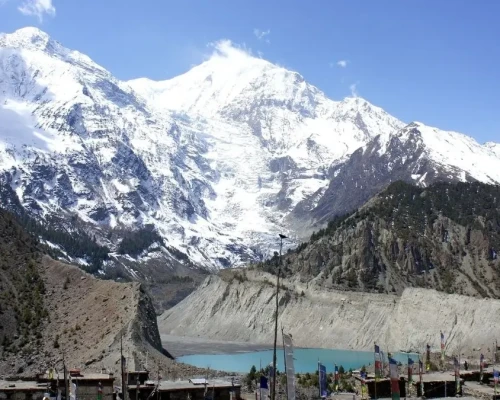
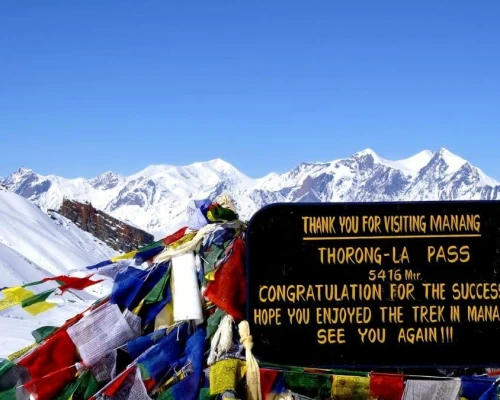
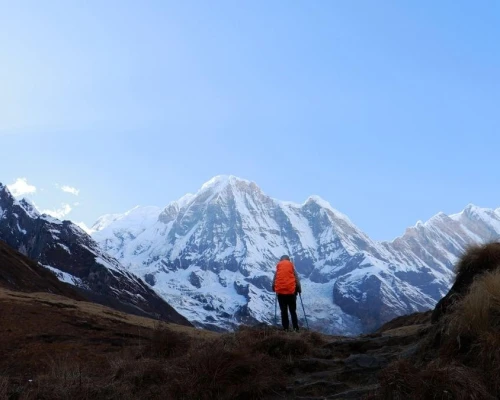

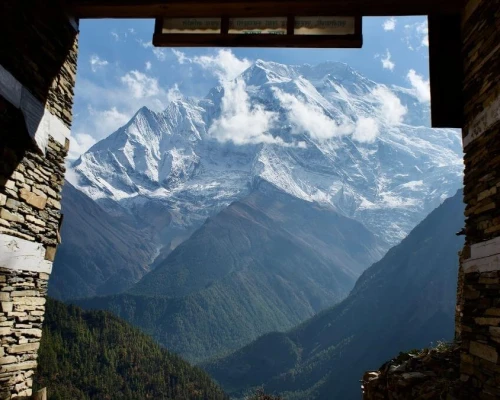
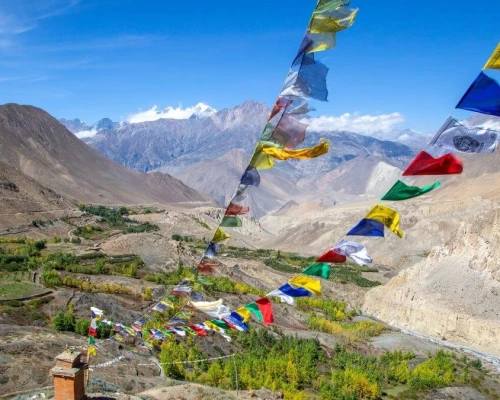
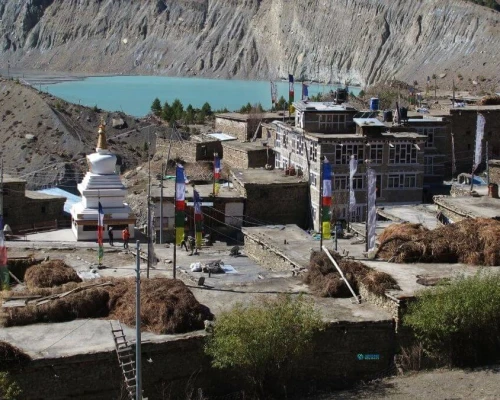
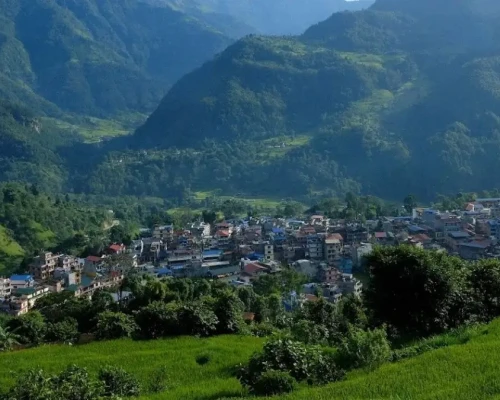
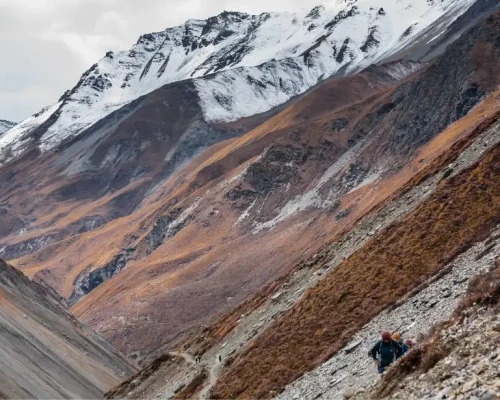
.webp)

 based on 5 reviews
based on 5 reviews